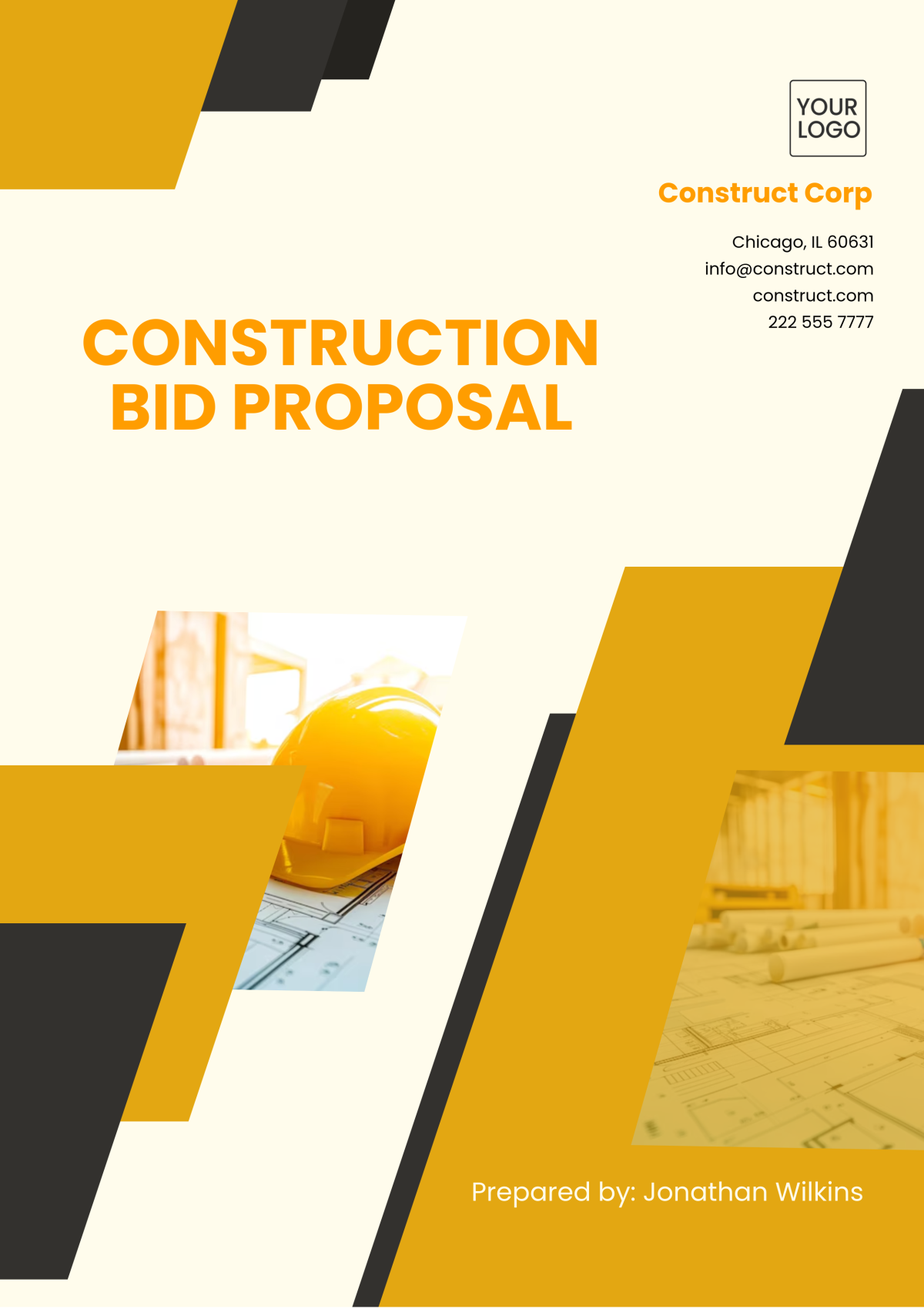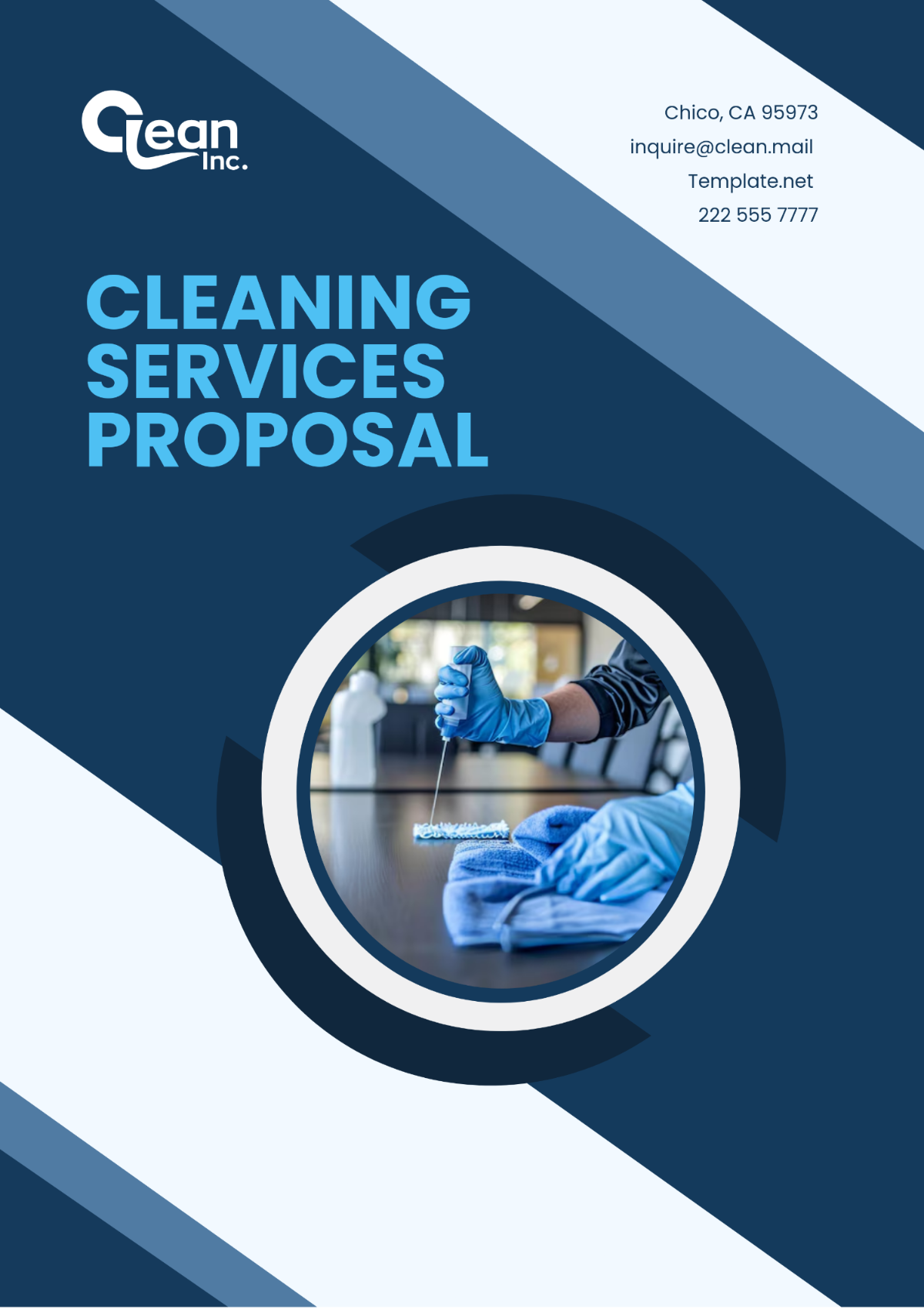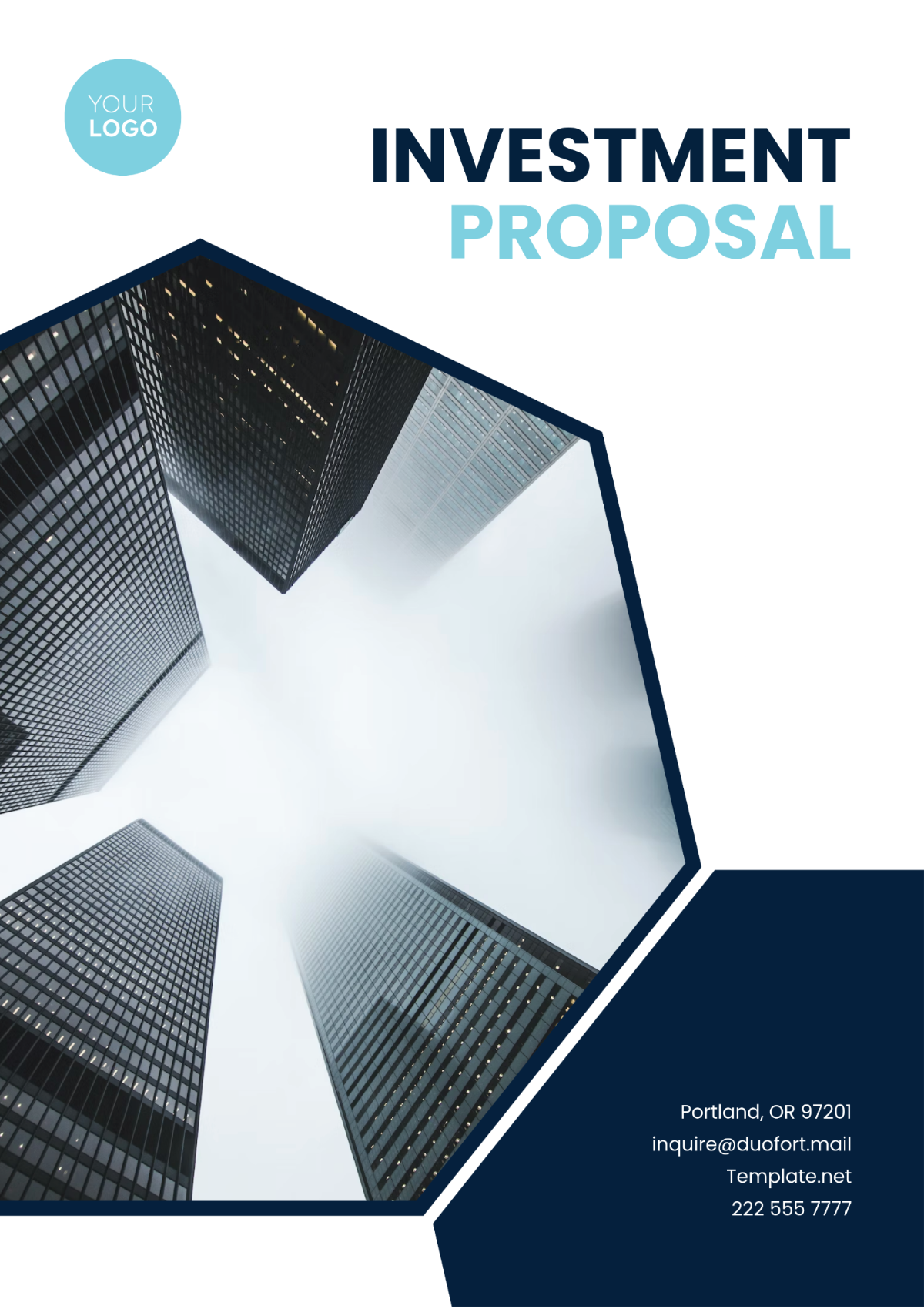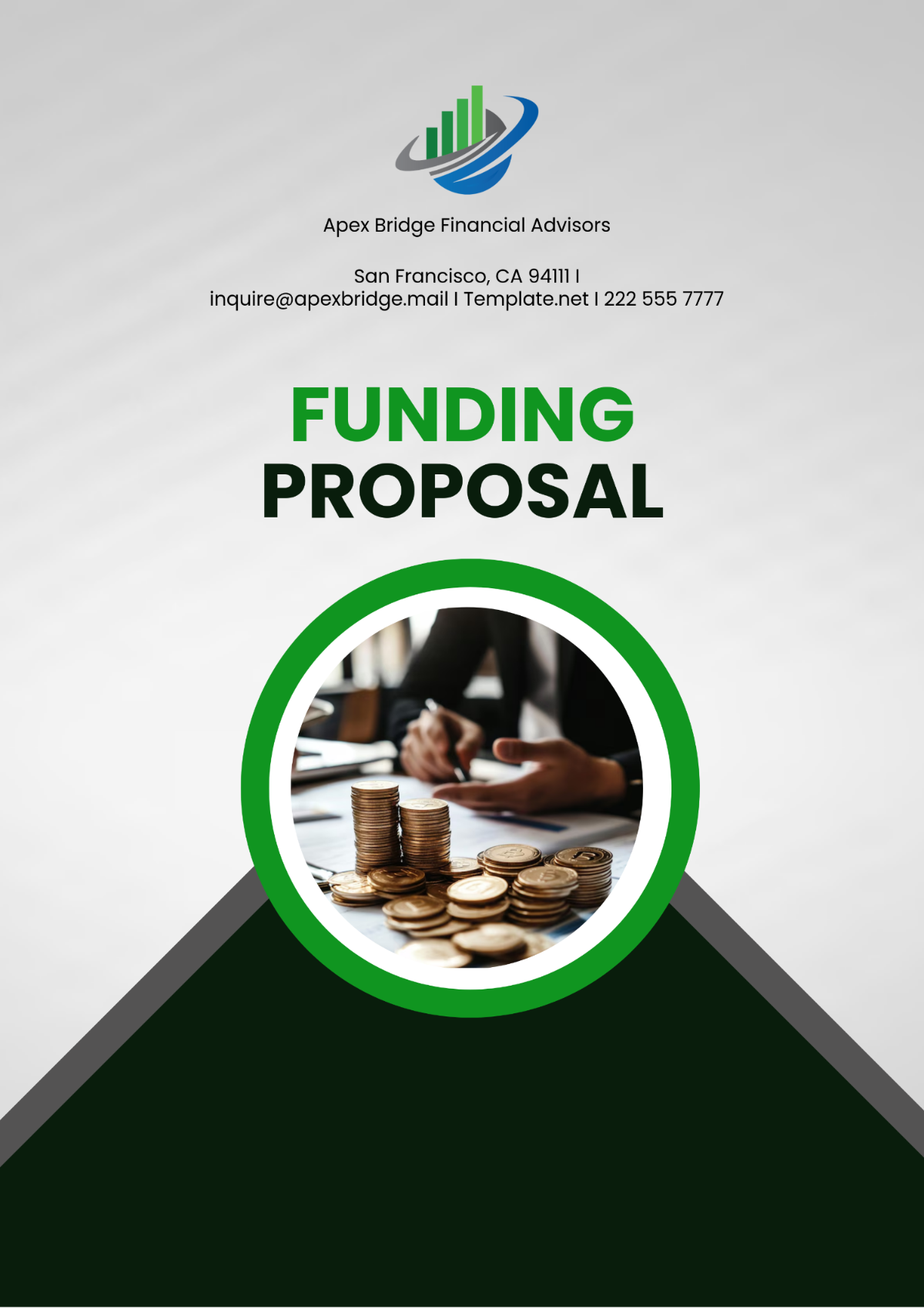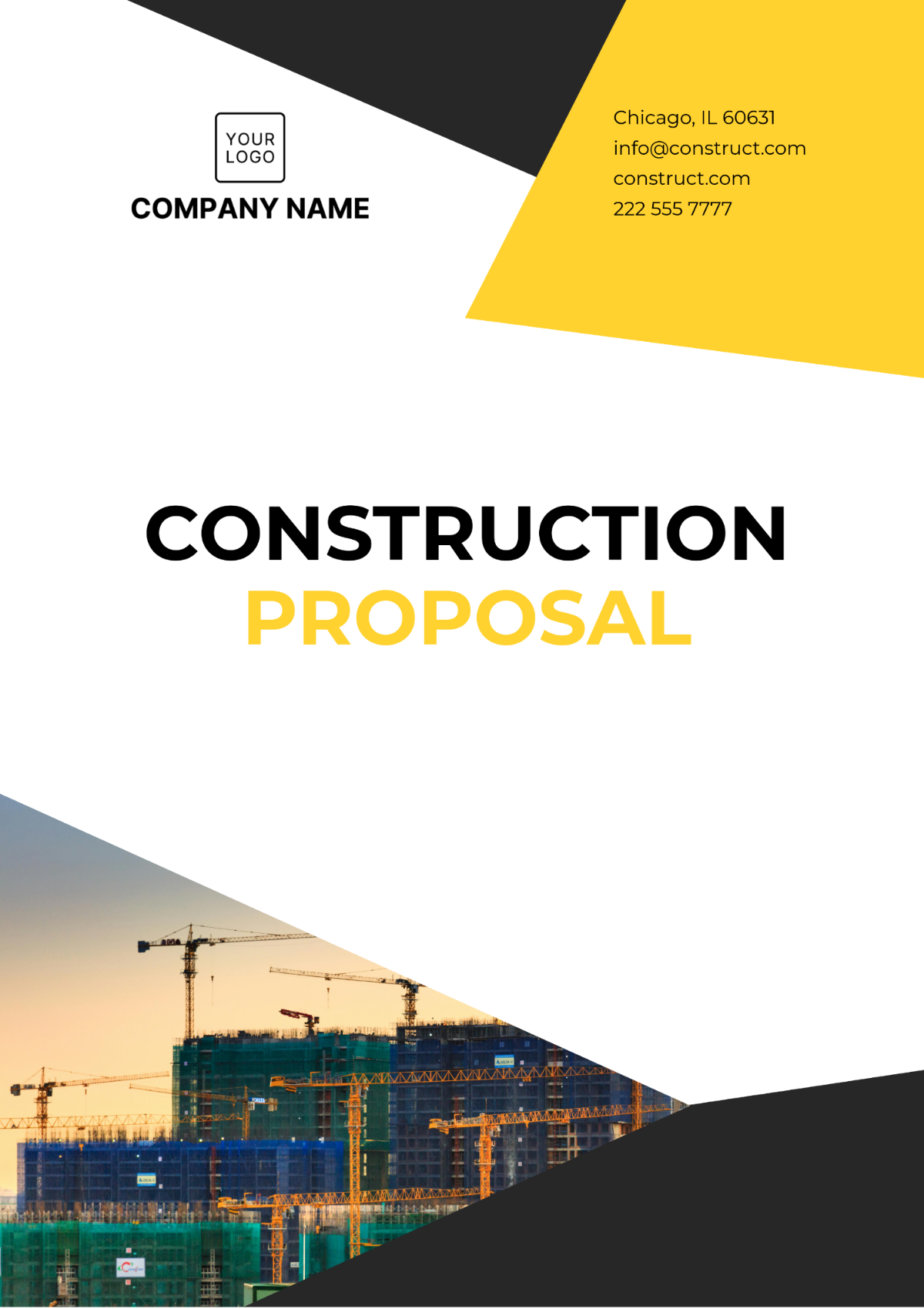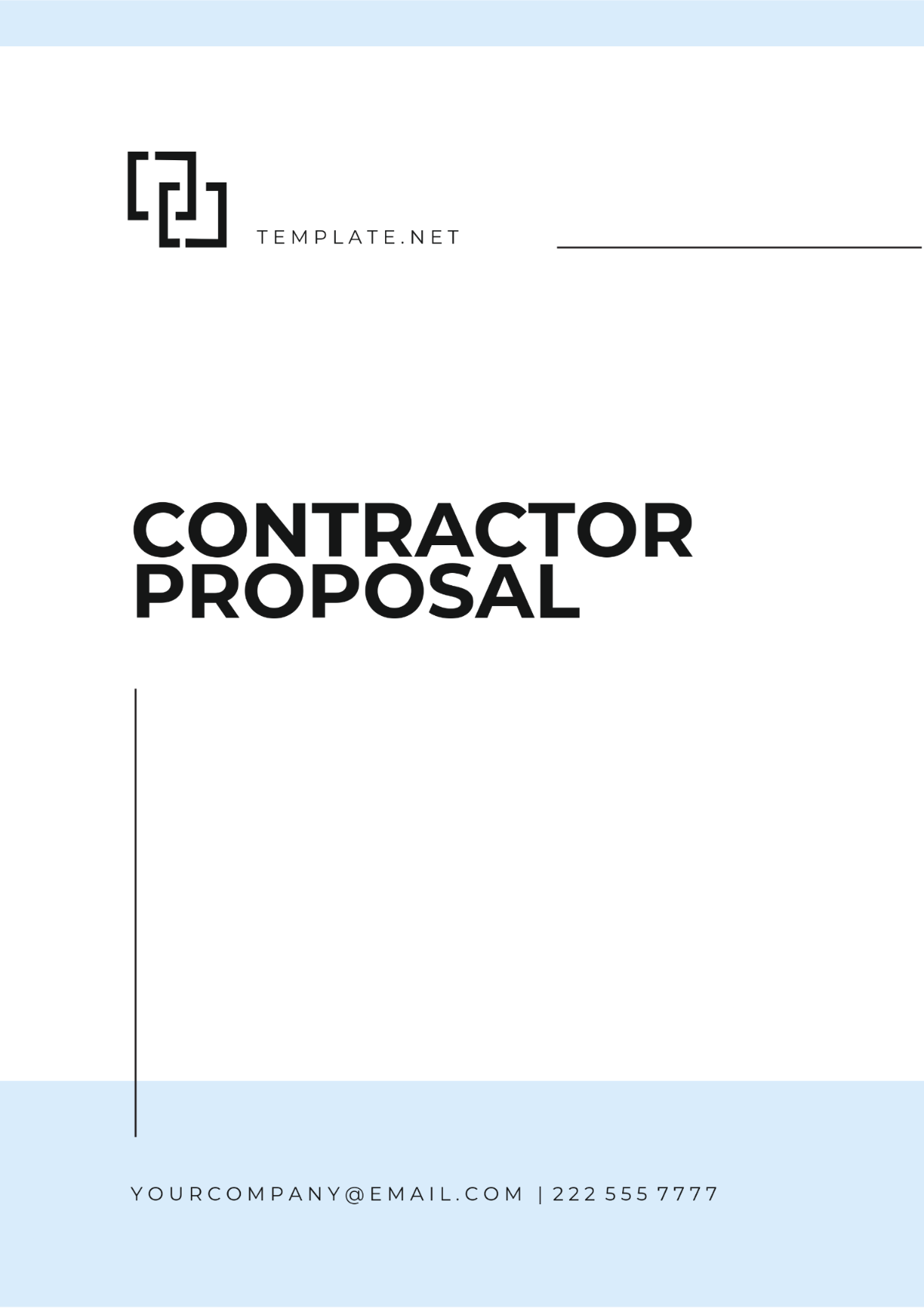Free Printable Movie Theater Technology Upgrade Proposal
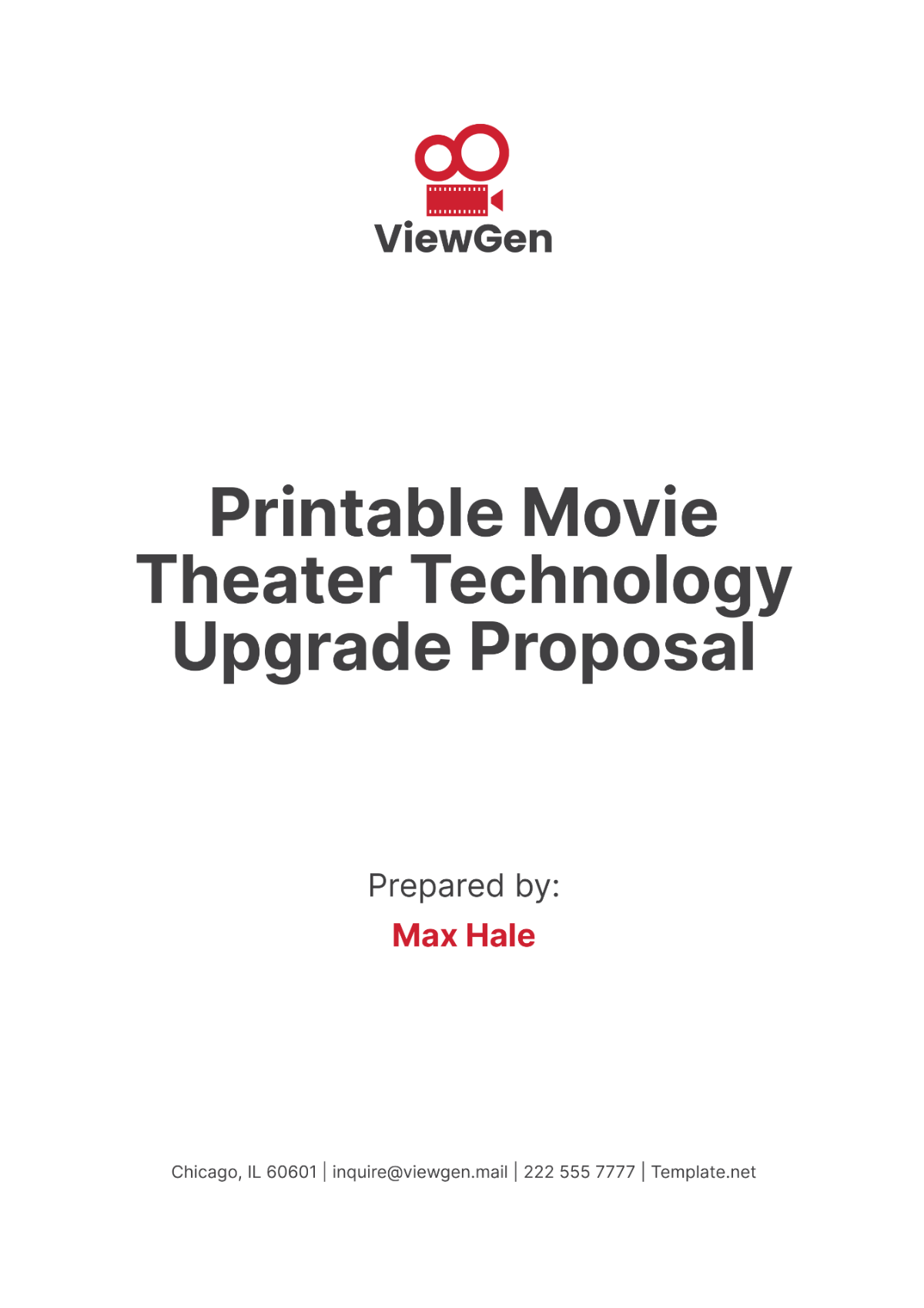
- 100% Customizable, free editor
- Access 1 Million+ Templates, photo’s & graphics
- Download or share as a template
- Click and replace photos, graphics, text, backgrounds
- Resize, crop, AI write & more
- Access advanced editor
Plan your technology upgrades in a few easy clicks with the Printable Movie Theater Technology Upgrade Proposal Template only here on Template.net! This editable template helps you outline your technology enhancement plan effortlessly. It’s customizable to meet your specific requirements, with the AI Editor Tool enabling quick and easy adjustments!
You may also like
- Business Proposal
- Research Proposal
- Proposal Request
- Project Proposal
- Grant Proposal
- Photography Proposal
- Job Proposal
- Budget Proposal
- Marketing Proposal
- Branding Proposal
- Advertising Proposal
- Sales Proposal
- Startup Proposal
- Event Proposal
- Creative Proposal
- Restaurant Proposal
- Blank Proposal
- One Page Proposal
- Proposal Report
- IT Proposal
- Non Profit Proposal
- Training Proposal
- Construction Proposal
- School Proposal
- Cleaning Proposal
- Contract Proposal
- HR Proposal
- Travel Agency Proposal
- Small Business Proposal
- Investment Proposal
- Bid Proposal
- Retail Business Proposal
- Sponsorship Proposal
- Academic Proposal
- Partnership Proposal
- Work Proposal
- Agency Proposal
- University Proposal
- Accounting Proposal
- Real Estate Proposal
- Hotel Proposal
- Product Proposal
- Advertising Agency Proposal
- Development Proposal
- Loan Proposal
- Website Proposal
- Nursing Home Proposal
- Financial Proposal
- Salon Proposal
- Freelancer Proposal
- Funding Proposal
- Work from Home Proposal
- Company Proposal
- Consulting Proposal
- Educational Proposal
- Construction Bid Proposal
- Interior Design Proposal
- New Product Proposal
- Sports Proposal
- Corporate Proposal
- Food Proposal
- Property Proposal
- Maintenance Proposal
- Purchase Proposal
- Rental Proposal
- Recruitment Proposal
- Social Media Proposal
- Travel Proposal
- Trip Proposal
- Software Proposal
- Conference Proposal
- Graphic Design Proposal
- Law Firm Proposal
- Medical Proposal
- Music Proposal
- Pricing Proposal
- SEO Proposal
- Strategy Proposal
- Technical Proposal
- Coaching Proposal
- Ecommerce Proposal
- Fundraising Proposal
- Landscaping Proposal
- Charity Proposal
- Contractor Proposal
- Exhibition Proposal
- Art Proposal
- Mobile Proposal
- Equipment Proposal
- Student Proposal
- Engineering Proposal
- Business Proposal
Printable Movie Theater Technology Upgrade Proposal
I. Executive Summary
The purpose of this Movie Theater Technology Upgrade Proposal is to outline the plan for a comprehensive technology upgrade at [Your Company Name]. This upgrade aims to enhance the overall movie-going experience for our patrons, improve operational efficiency, and maintain our competitive edge in the industry. The proposed upgrade will cover various aspects of our theater’s technology, including audiovisual systems, seating, ticketing, and concession stands.
The total budget for this project is estimated at $250,000, which includes the cost of new equipment, installation, training, and contingency funds. The project is planned to be executed over a six-month period, starting from July 2050 and concluding by October 2050. This timeline ensures minimal disruption to our operations while allowing for a phased implementation approach.
By upgrading our technology infrastructure, we aim to provide an enhanced viewing experience, streamline operations, and attract more customers to our theater. This document provides a detailed breakdown of the planned upgrades, the associated costs, and the anticipated benefits.
II. Current Technology Assessment
A. Audiovisual Systems
The following table outlines the current state of our audiovisual systems, highlighting areas that require upgrading:
System Component | Current Status | Issues Identified |
|---|---|---|
Projectors | Outdated, low resolution | Poor image quality |
Sound System | Inconsistent performance | Frequent malfunctions, poor sound quality |
Screens | Worn out, not reflective enough | Dull images, visual artifacts |
Projectors: Our current projectors are outdated and offer low resolution, leading to poor image quality that detracts from the viewing experience. The images are not sharp, and colors appear washed out, making it difficult for patrons to enjoy the full cinematic experience.
Sound System: The sound system's inconsistent performance results in frequent malfunctions and poor sound quality, impacting the overall movie experience. Patrons often report difficulty hearing dialogue and experiencing uneven audio levels during films.
Screens: The screens are worn out and not reflective enough, causing dull images and visual artifacts that affect audience engagement. This results in a less immersive experience and can lead to dissatisfaction among moviegoers.
Upgrading these audiovisual systems is crucial for delivering a high-quality movie experience that meets modern standards and audience expectations. These improvements will not only enhance visual and auditory clarity but also ensure our theater remains competitive in the market.
B. Seating and Interiors
The following table details the current condition of our seating and interior amenities:
System Component | Current Status | Issues Identified |
|---|---|---|
Seating | Worn out, uncomfortable | Complaints about comfort, appearance |
Carpeting | Stained, worn | Negative impact on theater ambiance |
Lighting | Inadequate, outdated | Poor visibility, energy inefficiency |
Seating: The current seating is worn out and uncomfortable, leading to frequent complaints about comfort and appearance. Many patrons have expressed dissatisfaction with the seating, which impacts their overall enjoyment of the movie experience.
Carpeting: The carpeting is stained and worn, which negatively impacts the overall ambiance of the theater. This creates a less appealing environment and can detract from the luxurious feel we aim to provide.
Lighting: The lighting is inadequate and outdated, resulting in poor visibility and energy inefficiency. This not only affects the viewing experience but also increases operational costs due to higher energy consumption.
Improving the seating and interior amenities will significantly enhance the comfort and aesthetic appeal of our theater, contributing to a better patron experience. These upgrades will help create a more inviting atmosphere and improve overall satisfaction.
C. Ticketing and Concession Stands
The following table provides an overview of the current state of our ticketing and concession stand systems:
System Component | Current Status | Issues Identified |
|---|---|---|
Ticketing System | Manual, slow | Long wait times, errors in transactions |
Concession Equipment | Outdated, inefficient | Slow service, frequent breakdowns |
POS System | Limited functionality | Inability to track sales effectively |
Ticketing System: Our manual ticketing system is slow, leading to long wait times and errors in transactions, which frustrates customers. This inefficiency can result in lost sales and negatively impact the overall customer experience.
Concession Equipment: The outdated and inefficient concession equipment results in slow service and frequent breakdowns, reducing customer satisfaction. This can lead to longer lines and decreased sales at our concession stands.
POS System: The current POS system has limited functionality, making it difficult to track sales effectively and manage inventory. This hampers our ability to optimize concession operations and maximize revenue.
Upgrading these systems will streamline operations, reduce wait times, and improve the overall efficiency of our theater. These enhancements will lead to a more enjoyable and efficient experience for both patrons and staff.
III. Proposed Technology Upgrades
A. Audiovisual System Upgrades
The following table outlines the proposed upgrades for our audiovisual systems, along with the estimated costs:
Component | Proposed Upgrade | Estimated Cost |
|---|---|---|
Projectors | 4K laser projectors | $60,000 |
Sound System | Dolby Atmos surround sound | $40,000 |
Screens | High-gain reflective screens | $20,000 |
4K Laser Projectors: Installing 4K laser projectors will enhance image quality, providing sharper and more vibrant visuals, costing $60,000. This will offer our patrons a more immersive and visually stunning movie experience.
Dolby Atmos Sound System: Upgrading to a Dolby Atmos surround sound system will deliver a more immersive audio experience, estimated at $40,000. This upgrade will ensure that sound is crisp, clear, and evenly distributed throughout the theater.
High-Gain Reflective Screens: High-gain reflective screens will improve brightness and clarity, ensuring a better visual experience, with an estimated cost of $20,000. These screens will enhance the quality of images, making them more vivid and engaging.
These upgrades will significantly improve the quality of our movie presentations, enhancing the overall viewing experience for our patrons. Investing in high-quality audiovisual technology is essential for maintaining our competitive edge and attracting more customers.
B. Seating and Interior Upgrades
The following table details the proposed upgrades for our seating and interior amenities, along with the estimated costs:
Component | Proposed Upgrade | Estimated Cost |
|---|---|---|
Seating | Ergonomic recliners | $50,000 |
Carpeting | High-quality, stain-resistant | $10,000 |
Lighting | LED lighting system | $5,000 |
Ergonomic Recliners: Replacing the current seating with ergonomic recliners will enhance comfort and satisfaction, costing $50,000. These recliners will offer patrons a luxurious and comfortable viewing experience.
High-Quality Carpeting: Installing high-quality, stain-resistant carpeting will improve the theater's appearance and durability, estimated at $10,000. This upgrade will contribute to a more elegant and inviting atmosphere.
LED Lighting System: Upgrading to an LED lighting system will improve visibility and energy efficiency, with an estimated cost of $5,000. LED lights will provide better illumination and reduce energy costs.
Enhancing the seating and interior amenities will create a more comfortable and aesthetically pleasing environment for our patrons. These improvements will lead to higher customer satisfaction and repeat visits, ultimately increasing revenue.
C. Ticketing and Concession System Upgrades
The following table outlines the proposed upgrades for our ticketing and concession systems, along with the estimated costs:
Component | Proposed Upgrade | Estimated Cost |
|---|---|---|
Ticketing System | Automated ticket kiosks | $15,000 |
Concession Equipment | High-speed, efficient equipment | $20,000 |
POS System | Integrated POS software | $10,000 |
Automated Ticket Kiosks: Installing automated ticket kiosks will reduce wait times and improve transaction accuracy, costing $15,000. These kiosks will provide a convenient self-service option for patrons.
High-Speed Concession Equipment: Upgrading to high-speed, efficient concession equipment will enhance service speed and reliability, estimated at $20,000. This equipment will help reduce wait times and improve overall service efficiency.
Integrated POS Software: Implementing integrated POS software will improve sales tracking and inventory management, with an estimated cost of $10,000. This software will streamline operations and provide valuable insights into concession performance.
These upgrades will streamline operations, improve efficiency, and enhance the overall customer experience. Investing in modern ticketing and concession systems is crucial for maintaining high levels of customer satisfaction and operational effectiveness.
IV. Implementation Plan
A. Timeline
The following table provides an overview of the proposed timeline for the technology upgrades:
Phase | Start Date | End Date |
|---|---|---|
Planning | July 1, 2050 | July 31, 2050 |
Procurement | August 1, 2050 | August 31, 2050 |
Installation | September 1, 2050 | October 31, 2050 |
Planning: The planning phase will begin on July 1, 2050, and end on July 31, 2050. During this phase, we will finalize the upgrade specifications, create detailed project plans, and secure necessary approvals.
Procurement: The procurement phase will take place from August 1, 2050, to August 31, 2050. We will purchase all the required equipment, materials, and software during this period, ensuring everything is ready for installation.
Installation: The installation phase is scheduled to start on September 1, 2050, and conclude by October 31, 2050. This phase involves setting up the new systems, testing them thoroughly, and providing training to our staff.
The timeline is designed to ensure a smooth and efficient implementation process, with minimal disruption to our theater operations. Each phase has specific tasks and milestones to ensure the project stays on track and within budget.
B. Responsibilities
The following table outlines the key responsibilities for each phase of the technology upgrade:
Role | Responsibility |
|---|---|
Project Manager | Overseeing the entire project, ensuring deadlines and budget adherence |
IT Team | Installing and configuring new systems |
Procurement Team | Sourcing and purchasing all required equipment |
Operations Manager | Coordinating with theater staff for smooth implementation |
Training Coordinator | Organizing and conducting staff training sessions |
Project Manager: The Project Manager is responsible for overseeing the entire project, ensuring deadlines and budget adherence. This role involves coordinating with all teams, monitoring progress, and addressing any issues that arise.
IT Team: The IT Team will handle the installation and configuration of new systems, ensuring they are set up correctly and function as intended. Their expertise is crucial for the technical success of the project.
Procurement Team: The Procurement Team is tasked with sourcing and purchasing all required equipment, ensuring that we get the best value for our investment. They will work closely with vendors to secure necessary items on time.
Operations Manager: The Operations Manager will coordinate with theater staff to ensure a smooth implementation. This involves scheduling installations to minimize disruption and managing any operational changes.
Training Coordinator: The Training Coordinator will organize and conduct training sessions for staff, ensuring they are familiar with new systems and can operate them efficiently. This role is vital for ensuring a seamless transition.
Having clear responsibilities and roles ensures that each aspect of the project is managed effectively. This structured approach will help us achieve our upgrade goals within the set timeline and budget.
C. Budget Allocation
The following chart and table provide the detailed budget allocation for the technology upgrade:
Component | Estimated Cost |
|---|---|
Audiovisual Systems | $120,000 |
Seating and Interiors | $65,000 |
Ticketing and Concession | $45,000 |
Contingency Fund | $20,000 |
Total | $250,000 |
Audiovisual Systems: The largest portion of the budget, $120,000, is allocated for upgrading the audiovisual systems. This includes new projectors, sound systems, and screens to enhance the movie-watching experience.
Seating and Interiors: $65,000 is allocated for improving seating and interiors. This includes ergonomic recliners, high-quality carpeting, and modern lighting to create a comfortable and aesthetically pleasing environment.
Ticketing and Concession: $45,000 is set aside for upgrading the ticketing and concession systems. This will streamline operations, reduce wait times, and improve service efficiency.
Contingency Fund: A contingency fund of $20,000 is included to cover any unexpected costs that may arise during the project. This ensures that we can handle unforeseen issues without compromising the project timeline or quality.
Proper budget allocation is crucial for ensuring that all aspects of the upgrade are adequately funded. This financial planning will help us manage resources effectively and achieve our project goals.
V. Expected Benefits
A. Enhanced Customer Experience
The following table outlines the expected benefits of the technology upgrades in terms of customer experience:
Benefit | Description |
|---|---|
Improved Visuals | Higher resolution and better image quality |
Superior Audio | Enhanced sound clarity and distribution |
Comfort | Ergonomic seating for better comfort |
Efficiency | Faster ticketing and concession service |
Improved Visuals: The upgrade to 4K laser projectors and high-gain screens will result in higher resolution and better image quality. This will significantly enhance the visual experience, making movies more engaging and enjoyable.
Superior Audio: The Dolby Atmos sound system will provide enhanced sound clarity and distribution, creating an immersive audio experience. This will make movies more captivating and enjoyable for our patrons.
Comfort: The installation of ergonomic seating will greatly improve comfort, allowing patrons to enjoy movies in a more relaxed and enjoyable manner. This will lead to higher customer satisfaction and repeat visits.
Efficiency: Upgrading ticketing and concession systems will result in faster service, reducing wait times and improving overall efficiency. This will enhance the convenience and satisfaction of our patrons.
These benefits will lead to an improved overall customer experience, attracting more patrons and increasing revenue. Investing in these upgrades is essential for maintaining our reputation as a premier movie theater.
B. Operational Efficiency
The following table details the expected benefits of the technology upgrades in terms of operational efficiency:
Benefit | Description |
|---|---|
Reduced Maintenance | Modern equipment requires less maintenance |
Energy Efficiency | LED lighting reduces energy consumption |
Inventory Management | Improved POS system for better tracking |
Staff Productivity | Automated systems reduce manual work |
Reduced Maintenance: Modern equipment requires less maintenance, reducing downtime and maintenance costs. This will lead to more consistent operations and fewer interruptions.
Energy Efficiency: Upgrading to LED lighting will reduce energy consumption, leading to lower utility costs and a smaller environmental footprint. This will help us operate more sustainably and efficiently.
Inventory Management: The improved POS system will provide better tracking of sales and inventory, allowing for more efficient inventory management. This will help us optimize stock levels and reduce waste.
Staff Productivity: Automated ticketing and concession systems will reduce manual work, allowing staff to focus on other tasks and improve productivity. This will lead to more efficient operations and a better overall service.
These operational efficiencies will help us reduce costs, improve productivity, and maintain high service standards. Investing in modern technology is essential for ensuring long-term operational success.
VI. Risk Management
The following table outlines the potential risks associated with the technology upgrade and the proposed mitigation strategies:
Risk | Mitigation Strategy |
|---|---|
Budget Overruns | Contingency fund, strict budget control |
Installation Delays | Detailed project plan, regular monitoring |
Equipment Malfunctions | Vendor warranties, thorough testing |
Staff Training Issues | Comprehensive training programs |
A. Budget Overruns
To mitigate the risk of budget overruns, we have allocated a contingency fund and will maintain strict budget control throughout the project. Regular budget reviews will help ensure we stay on track financially.
B. Installation Delays
A detailed project plan and regular monitoring will help mitigate the risk of installation delays. This will ensure that any issues are identified and addressed promptly, keeping the project on schedule.
C. Equipment Malfunctions
Vendor warranties and thorough testing of new equipment will mitigate the risk of equipment malfunctions. This will ensure that any issues are covered and resolved quickly.
D. Staff Training Issues
Comprehensive training programs will ensure that staff are well-prepared to use the new systems. This will minimize the risk of operational issues due to inadequate training.
Proactively identifying and addressing potential risks will help ensure the successful implementation of the technology upgrades. These mitigation strategies will help us manage risks effectively and achieve our project goals.
VII. Monitoring and Evaluation
A. Monitoring Plan
The following table outlines the key metrics and methods for monitoring the progress of the technology upgrade project:
Metric | Monitoring Method |
|---|---|
Project Timeline | Regular progress reports, milestone reviews |
Budget | Monthly budget reviews, expense tracking |
System Performance | Testing and feedback, performance metrics |
Customer Satisfaction | Surveys, feedback forms |
Project Timeline: Regular progress reports and milestone reviews will be used to monitor the project timeline. This will help ensure that we stay on schedule and identify any delays early.
Budget: Monthly budget reviews and expense tracking will be used to monitor the project budget. This will help us manage costs effectively and stay within the allocated budget.
System Performance: Testing and feedback, along with performance metrics, will be used to monitor system performance. This will help ensure that the new systems are functioning as expected and meeting our performance standards.
Customer Satisfaction: Surveys and feedback forms will be used to monitor customer satisfaction. This will help us understand the impact of the upgrades on our patrons and make any necessary adjustments.
Regular monitoring will help us ensure that the project stays on track and meets our goals. These metrics and methods will provide valuable insights into the project's progress and success.
B. Evaluation Plan
The following table outlines the key criteria and methods for evaluating the success of the technology upgrade project:
Criterion | Evaluation Method |
|---|---|
Project Completion | Final project review, milestone achievement |
Budget Adherence | Final budget review, expense reconciliation |
System Performance | Performance testing, user feedback |
Customer Satisfaction | Survey results, feedback analysis |
Project Completion: A final project review and milestone achievement will be used to evaluate project completion. This will ensure that all aspects of the project have been successfully implemented.
Budget Adherence: A final budget review and expense reconciliation will be used to evaluate budget adherence. This will ensure that the project has been completed within the allocated budget.
System Performance: Performance testing and user feedback will be used to evaluate system performance. This will ensure that the new systems are functioning as expected and meeting our performance standards.
Customer Satisfaction: Survey results and feedback analysis will be used to evaluate customer satisfaction. This will help us understand the impact of the upgrades on our patrons and identify any areas for improvement.
Comprehensive evaluation will help us measure the success of the project and identify any areas for improvement. These criteria and methods will provide valuable insights into the effectiveness of the technology upgrades.
VIII. Future Outlook
A. Long-Term Benefits
Increased Revenue: The technology upgrades are expected to attract more patrons and result in higher ticket sales, increasing our revenue in the long term.
Competitive Advantage: The upgrades will differentiate our theater from competitors, giving us a competitive edge in the market.
Sustainability: Reduced energy consumption and lower operating costs will contribute to our sustainability goals and improve our financial performance.
Customer Loyalty: The enhanced customer experience will lead to higher customer satisfaction and repeat visits, fostering customer loyalty.
These long-term benefits will help us achieve our strategic goals and ensure the continued success of our theater. Investing in technology upgrades is essential for maintaining our competitive position and meeting the evolving needs of our patrons.
B. Expansion Opportunities
New Services: The technology upgrades will enable us to offer new services like virtual reality (VR) experiences, attracting a wider audience and generating additional revenue.
Partnership Potential: The upgrades will facilitate potential partnerships with technology companies, allowing us to leverage their expertise and resources.
Market Expansion: With the enhanced capabilities, we can consider expanding to new locations, tapping into new markets and increasing our market presence.
Enhanced Offerings: The upgraded systems will enable us to provide premium viewing experiences, attracting high-end customers and boosting our revenue.
Exploring these expansion opportunities will help us grow our business and achieve our long-term strategic objectives. The technology upgrades will provide a strong foundation for future growth and innovation.
IX. Conclusion
The proposed technology upgrade for [Your Company Name] is a strategic investment that will significantly enhance our theater's capabilities and customer experience. With a total budget of $250,000, the upgrade will be implemented in three phases: planning, procurement, and installation, ensuring a smooth and efficient process. The expected benefits include improved visuals and audio, enhanced customer comfort, operational efficiencies, and increased revenue.
The upgrade will not only strengthen our competitive position but also provide a platform for future growth and innovation. By investing in modern technology, we will be able to offer superior services, attract more patrons, and achieve our long-term strategic goals. We are confident that this proposal will lead to significant improvements in our operations and customer satisfaction, ensuring the continued success of our theater.


